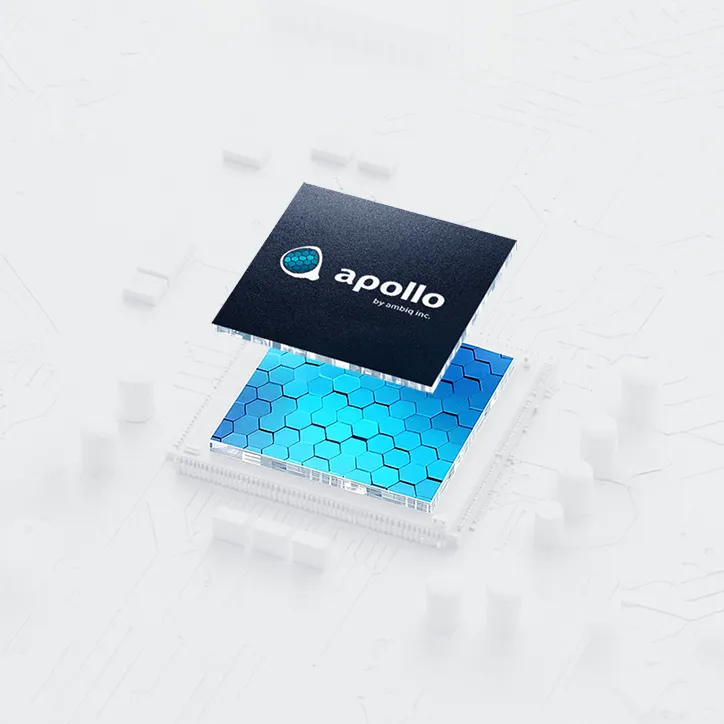
The realm of artificial intelligence (AI) is rapidly expanding, driving boundaries across diverse industries. While centralized cloud computing has long been the dominant paradigm for AI applications, a new paradigm is emerging: Edge AI. This innovative approach brings AI processing power directly to the edge of the network, closer to the data source itself.
Edge AI offers a compelling Low-power processing set of advantages over traditional cloud-based AI. By processing data locally, these systems can achieve remarkably reduced latency, enabling real-time insights and rapid responses. This is particularly crucial for applications that require low-latency decision-making, such as autonomous driving, industrial automation, and real-time monitoring.
- Additionally, Edge AI reduces the reliance on network bandwidth, making it ideal for applications in remote or resource-constrained environments.
- Additionally, by processing data locally, Edge AI can enhance privacy and security by minimizing the amount of sensitive information transmitted over the network.
As we delve deeper into this article, we will explore the fundamental concepts of Edge AI, its key benefits, common applications, and the tools that are shaping this transformative field.
Powering the Future: Battery-Driven Edge AI Solutions
The rise of AI is revolutionizing industries, and at the forefront of this transformation lies edge computing. By bringing computation closer to data sources, edge AI empowers real-time decision-making and reduces latency. However, a critical challenge for battery-driven edge AI devices is ensuring sustainable power consumption.
Innovative battery technologies and efficient algorithms are crucial to enable these devices to operate reliably in remote or disconnected environments.
Through advancements in power cell technology, we can expect to see longer operational lifetimes and improved performance for battery-driven edge AI solutions.
Moreover, the integration of solar energy sources will further enhance sustainability and reduce reliance on traditional power grids. This convergence of battery technology and edge AI has the potential to unlock a diverse array of applications, from smart agriculture and industrial automation to autonomous vehicles and healthcare monitoring.
Cutting-Edge Ultra-Low Power Technologies: Enabling a New Era of Edge Computing
The proliferation for edge computing applications demands efficient and reliable electronics. Ultra-low power devices are revolutionizing this landscape by enabling a new era of processing at the edge. These devices consume minimal energy, extending battery life and minimizing reliance on constant electrical outlets.
- Furthermore, ultra-low power electronics enable a wide range for applications, such as wearable sensors, that need constant connectivity and real-time processing.
- Consequently, this technology is driving innovation throughout various industries, including transportation.
Finally, ultra-low power electronics are facilitating a crucial role in shaping the future of edge computing by providing the performance needed to meet the demands of a interconnected world.
The Rise of Edge AI: Distributed Intelligence in a Hyperconnected Era
As the extent of connected devices explodes, traditional centralized cloud computing models face unprecedented limitations. This is where Edge AI emerges as a transformative solution, bringing intelligence and processing power closer to the data source. By deploying AI algorithms on edge devices, we can achieve real-time insights, reduced latency, enhanced security, and optimized resource utilization. From industrial automation, Edge AI is poised to revolutionize industries and reshape our connected world.
- Moreover, Edge AI empowers a new generation of innovative applications that can function autonomously.
- Consider smart homes where devices can communicate seamlessly, anticipating needs and responding in real time.
Exploring the Convergence of AI and IoT
Edge AI represents a paradigm shift in artificial intelligence, pushing computation closer to the data source. This means that instead of relying on centralized cloud servers, AI algorithms are executed directly on edge devices such as smartphones, sensors, and embedded robots. This localized approach offers several key advantages. Firstly, it reduces latency by processing information in real-time, enabling faster reactions. Secondly, it utilizes bandwidth by analyzing data locally, lowering the amount of information that needs to be transmitted to the cloud. Thirdly, edge AI improves privacy and security by storing sensitive data on-device, rather than sending it over potentially vulnerable networks.
These factors make edge AI particularly applicable for a wide range of applications, including autonomous vehicles, smart cities, industrial automation, and healthcare monitoring. As the internet of things continues to expand, edge AI is poised to play an increasingly important role in shaping the future of technology.
The Rise of Edge AI: Transforming Industries with On-Device Intelligence
Edge AI is rapidly emerging as a transformative technology, revolutionizing diverse industries by bringing intelligent capabilities directly to the edge. This shift from centralized cloud processing to on-device decision-making offers numerous perks, including reduced latency, enhanced security, and improved reliability.
Industries such as healthcare are already leveraging Edge AI to optimize operations, enhance productivity. In manufacturing, sensors and devices deployed at the edge can acquire real-time data on equipment performance, enabling predictive maintenance and minimizing interruptions. Healthcare providers are using Edge AI for applications like wearable technology, allowing for quicker diagnoses and more customized treatment plans.
The growing adoption of Edge AI is fueled by several factors, including the proliferation of low-power chips, advancements in AI algorithms, and a growing need for real-time insights. As Edge AI technology continues to evolve, we can expect even more innovative applications that will reshape industries across the globe.
Battery-Powered Edge AI
Ambiq makes unprecedented energy-efficient SoCs and ultra-low power platform solutions that enable edge AI on billions of battery-powered devices. Our mission is to put intelligence everywhere by delivering the lowest power semiconductor solutions on the planet.
Facebook | Linkedin | Twitter | YouTube